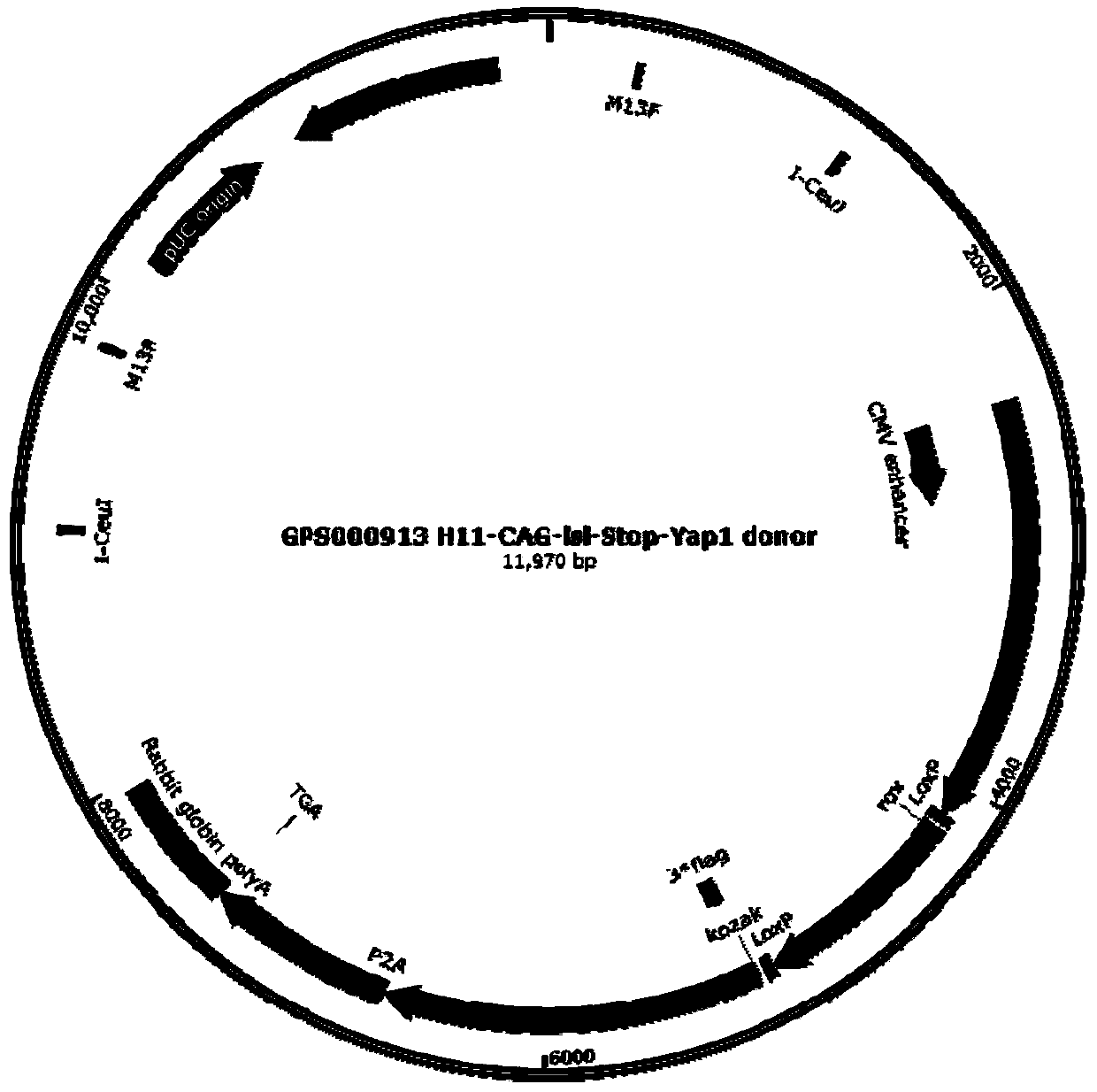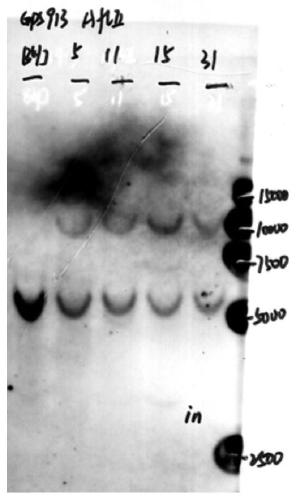Construction method for conditional overexpression Yap1 gene mice model at H11 locus
A construction method and mouse model technology, applied in the field of genetic engineering, can solve problems such as the lack of a clear understanding of basic issues in developmental biology, and achieve the effects of increasing the probability of homologous recombination repair, improving reliability, and improving accuracy
- Summary
- Abstract
- Description
- Claims
- Application Information
AI Technical Summary
Problems solved by technology
Method used
Image
Examples
Embodiment
[0022] Example: Construction of conditionally overexpressed mouse Yap1 animal model at the H11 site
[0023] Using CRISPR Cas9 gene editing technology to knock in the Yap1 gene sequence at the H11 site of the mouse model, and at the same time achieve conditional overexpression of Yap1, so as to establish a conditional overexpression of Yap1 mouse model. C57BL / 6J mice are a well-developed mouse strain at present. Using C57BL / 6J mice as background mice, a conditional Yap1 mouse model was successfully obtained. The acquisition of the model includes the following steps:
[0024] (1) Determine the H11 site
[0025] According to the mouse chromosome 11 sequence, the gene sequence of the H11 site was selected, and the selected gene sequence was shown in SEQ.ID.NO.1.
[0026] (2) sgRNA screening of conditionally overexpressed mouse Yap1 at the H11 site
[0027] The sgRNA targeting the mouse sequence was designed at the H11 site. Design and synthesize the recognition sgRNA sequence...
PUM
 Login to View More
Login to View More Abstract
Description
Claims
Application Information
 Login to View More
Login to View More - R&D
- Intellectual Property
- Life Sciences
- Materials
- Tech Scout
- Unparalleled Data Quality
- Higher Quality Content
- 60% Fewer Hallucinations
Browse by: Latest US Patents, China's latest patents, Technical Efficacy Thesaurus, Application Domain, Technology Topic, Popular Technical Reports.
© 2025 PatSnap. All rights reserved.Legal|Privacy policy|Modern Slavery Act Transparency Statement|Sitemap|About US| Contact US: help@patsnap.com



